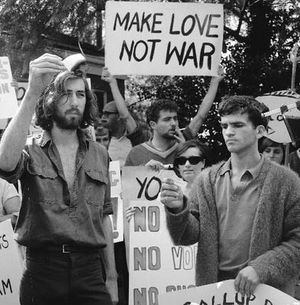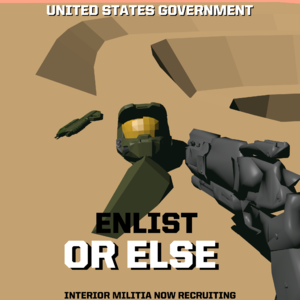The Great Toy Soldiers War of 2003
The Great Toy Soldiers War of 2003 was possibly one of the most deadly conflicts of our time. Regarded as the pivotal conflict between the superpowers of the building, the Great Toy Soldier War of 2003 fought mostly inside the Boutique Apartments in New York City, the war was waged between the long-time and well-known rivals, the USA (United States of America), a country known for practical anarchy from how much freedom its citizens were given, and the USTT (Union of Socialist Tan Federations), a fascist dictatorship with many enemies but a handful of powerful allies over the assassination of Viktor L. Tannenborski in the USTT, revealed just a few days after the assassination to have been orchestrated by an unknown US spy. It was a war on a massive scale, not just in location, but in weapons, vehicles, countries affected, and lives lost. It was a carryover from the smaller scale conflict of 1998, which comprised of many of the same Generals, and used some of the same technologies, with some notable new discoveries and advancements. The War ended on May 23, 2003 when both nations signed a peace treaty.
Major Factions[edit | edit source]
- The Floor 3 Alliance (USA, Blubian Hegemony and Reddian Empire)
- The Union of Floor 7 (USTT and Purple Republic)
- The "Other Guys" (All the nations which didn't participate)
- The Rebel Factions (disparate groups on the 5th floor countering the invasion by the Alliance Fourth and Fifth Militias)
Key Fighters[edit | edit source]
- Lt. General Hawkins
- ÜbK Trotskin
- Gen. Armstrong
- GMa. Ündenwerfer
- Adolfus Hammenasbar
- Adm. Maclellan
- USTT ÜbSK. Gröbels
- Purple Republic ÜbAdm. Gustavus
Timeline[edit | edit source]
4th/5th Floor Hallway[edit | edit source]
In one of the most essential theaters in the war, he area of the 4th and 5th floor hallways were of major strategic importance, due to resources and being the main area in between the two alliances. It was on this front that the U.S. began to change their ways of fighting, through choice and necessity.
Jan. 11th, 2003: US special forces and construction teams are deployed to construct the trenches, originally made for defense of the area, little did they realize the enemy was constructing not only much more fortified trenches, but also setting up massive artillery batteries and air bases to support the positions and assault the enemies.
Jan. 12th, 2003: Lt. Gen. Hawkins of the US takes command of the US Fourth and Fifth armies and deploying them in the trenches and constructing air bases behind their lines to combat ÜbK Trotskin of the USTT, with command of the 1st, 2nd, 3rd, 4th, 5th and 6th USTT Infantër Corppen.
Jan. 15th, 2003: After a short three-day armistice between the two sides for mutual construction of benefits, Purple Republic bomber squadron bombards US Artillery Batterries 1-3. The US responds to this by fleeing from the 4th and 5th floor fronts, to have their positions taken over by Gen. Armstrong in command of the Hegemony's 1st, 2nd, 3rd, and 4th armies, as well as the 2nd and 3rd armored corps. Reddian GMa. Ündenwerfer took command of the 3rd, 4th, 5th, 6th, 7th, and 8th flying corps and the 3rd and 4th Reddian armies, now against not only Trotskin but a younger Purple Republic officer as well: Adolfus Hammenasbar, soon to become leader of the then-united USTT and Purple Republic in the Second Toy Soldier War of 2005-2006.
Jan. 16th, 2003: the Blubian Hegemony 1st and 2nd armies, with air support from the entire Reddian aerial force on the 4th floor, launch a daring assault on USTT artillery positions 1 and 2, in an attempt to stop the massive casualties inflicted by the batteries. Little did they know this campaign would turn out to be the bloodiest campaign in the history of the war.
Feb. 2nd, 2003: Blubian Hegemony troops, after half a month of intense fighting, finally manage to secure the 4th floor and move on to the 5th. With the new introduction of the Tank to warfare, formerly thought inconventional due to its slow speed and weakness to artillery, it now helped them quickly secure a position on the 5th floor, however they would make no more progress in the rest of the war until many months later.

Apr. 5th, 2003: Increased production capabilites, and a liberal shipment to the 5th floor meant that the US as a whole would be better suited for a large scale assault on the 5th floor, and it was proposed and finalized on this day. This would be the first time in the Great Toy Soldiers War that it wouldn't primarily be USTT soldiers, but rebel factions opposed to the war, willing to die for their land. This caused a great political divide back home, but the President of the US decided to go forward with it, promising the citizens that it would be a swift and dignified invasion.
Apr. 23rd, 2003: However, the operation was more difficult than predicted, as the wayfinders hadn't finished their expedition by the time the deployment date came. The hallway was untold territory, and Gen. Hawkins was forced to bring his men into it. The Fourth and Fifth Armies found conflict and dominated some factions, but they had a long way to go in order to truly finish the fight in the Hallways.
Apr. 30, 2003: The US government became more and more worried that their plan of eventually colonizing the Fourth and Fifth Floor would fall through, considering low updates from the Armies. The US decided to stop supply shipments, which was leaked to the press, causing major outrage among the citizens of the US, already having to deal with fear of a civil war and manufacturing woes. The government avoided disaster by attempting to impeach the President of the US, which tranquilized the people for a while, until they returned to their classical anarchical ways.
Assault on the Fifth Floor[edit | edit source]
May 23rd, 2003 - Midday: On this day, the Armies announced that they were to the last sector of the 5th floor Hallway. They had to go all out on this attack, and their march to the final sector there was described by photographers as nothing short of incredible. The soldiers knew that they would only have the USTT to conquer after this. This ordeal of the 5th floor was entirely different fighting for the soldiers, as they had only known bouts of trench combat. This would help them in their final assault against the USTT.
The soldiers reached the final sector around noon. Gunfire could be heard almost immediately. The rebels were using salvaged guns and improper ammo for them, and they showed that they weren't going down without a fight. Suddenly, in what was supposed to be an experienced assault on the final sector turned into a desperate battle.
After a few minutes of deliberation, the generals decided that a push was necessary. Soldiers interviewed after claimed that the generals had ordered them to flank the enemy, but hey, Alzheimer's does that to you. Either way, records show that there was some element of forward movement in the plan of attack. The tanks were their only hope, but with them heavily damaged, some only lasted a few minutes before exploding in a blaze of glory. In the end, only one tank remained, but they had weakened enemy defenses. It was time for close quarters combat.
May 23rd, 2003 - 16:00: After a brief confrontation with rebel forces flanking them, the US Fourth and Fifth Armies successfully invaded the final rebel base. After executing the leader, they gave the all clear to the government, and headed to the extraction point. The end of the Assault on the Fifth Floor marked the end of the 4th and Fifth Hallway Theater.
Parking Lot[edit | edit source]
Formerly occupied only by the Native Tribes, this area was soon the site of intense trench fighting and where the US would make a name for itself on a global scale. This is where the Third Army shines in the war, as they fought on this front longer than the Campaign on the Fourth and Fifth floors. Allied nations were even given a chance to shine.
Jan. 16th, 2003: Lt. Gen. Hawkins deploys the Fourth Army to secure the local populace, by force if necessary, and the Fifth hunkers down in preparation for a strong attack from the Purple Republic, as the Parking Lot was their main military staging point before the war. This was a daring move by Hawkins, taking only two armies against nearly the entire Purple Republic force, and would end in the complete annihilation of the two armies and the public execution of Lt. Gen. Hawkins.
Jan. 19th, 2003: After three days of intense fighting, Purple troops storm Hawkins's Headquarters and capture or kill nearly everyone on site. The ones who got away, including Hawkins, decided to set up from now on on the 4th floor, with their location broadcasted as the third floor. It was hard for them to get pizza however.
Jan 20th, 2003: Purple troops stationed in the parking lot began to become insurgents, and attack natives. The troops saw it as an act of opposition, the USTT saw it as a compliment. As a result of this typical misunderstanding, the USTT gave the Purple troops thousands of tons of tanks, machine guns, and more. This helped them attack the natives, but it would be less effective against the U.S.
Jan 25th, 2003: After a long trek from the building, the Third Army, comprised of rookie troops set up far from the Purple Army troops. However, in the night, they received heavy fire, and were threatened by a massive monster truck that the USTT had saved up for. Much of the Third Army was crushed, but rising General Lars Anton, previously a Sergeant in the Fifth Army, as deployed elsewhere like many other troops (lower ranked soldiers in the Fifth Army during this time were sent to Blubian Hemegony bases), decided that he had to call in his aerial strike force, which the military granted him one use of. This was wildly successful, but it still didn't solve the issue of lost men of the Third Army. Gen. Anton ordered the Third Army to dig trenches, to surprise the Purple troops. However, the Purple troops had a similar idea.
Trench warfare[edit | edit source]

The dictionary defines trench warfare as "a type of combat in which opposing troops fight from trenches facing each other." This happened a lot over the course of the war.
One of the most infamous displays of this type of warfare was The 4th Floor Tea Party. Furious over tea taxes imposed by the USTT, thousands of US soldiers dumped gallons of tea into the Boutique Apartments swimming pool. Fittingly, the tea was crimson, suggesting that blood had been spilled.
Swimming Pool[edit | edit source]
This area, of major strategic importance due to sea access to the Island Nations, who had too many resources to know what to do with that also very expensive (thus making the island nations very rich from Blubian trading). If the 7th Floor Union secured the swimming pool, then all would be lost on the other fronts.
Jan. 16th, 2003: Adm. Maclellan of the Blubian Hegemony, a renowned naval commander, took control of the entire Blubian fleet and Marine Corps, to use as he pleased. He immediately began posting MP Guards in the port cities and Island Nations, and enforcing harsh border security at the Island Nations and the port cities, as the Purple Republic was known to use tactics such as Suicide Bombers and Kamikaze fighters to get their way.
Feb. 3rd: With all quiet on the Swimming Pool front, Adm. Maclellan decides to deploy the fleet against two worthy adversaries to block their connection to the Island Nations: USTT ÜbSK. Gröbels, and Purple Republic ÜbAdm. Gustavus in the battle of the small port town of "Germania."
Opposition to the war[edit | edit source]

Opinions on the war were highly unfavorable, especially among pot-smoking hippies who would rather spend their free time listening to The Beatles, Procol Harum, and Iron Butterfly's "In-A-Gadda-Da-Vida" on vinyl records or writing their own protest songs on 12-string guitar. They did everything to oppose the war: They burned their draft cards, grew their hair long, pretended to be gay, and wrote such chart-topping songs as "Playtime's Over," "Put Your Toys Away," and "Bring the Toys Back Home."
In media[edit | edit source]
The Great Toy Soldier War of 2003 is the third most popular war to use as the subject of a movie, behind Vietnam and World War II. Most of these films focus on the Fourth and Fifth Floor Campaign or the Swimming Pool. Hundreds of films have been made, such as:
- Don't Let Your Men Grow Up to Be Boys
- All Quiet on the Swimming Pool Front
- Clint Eastwood won a bunch of Oscars.
- Toypocalypse Soon
- Ranked #7 on AFI's 100 Years... 100 Wars


